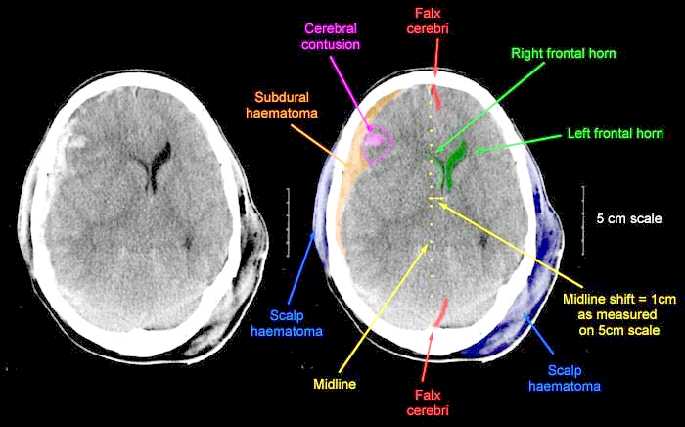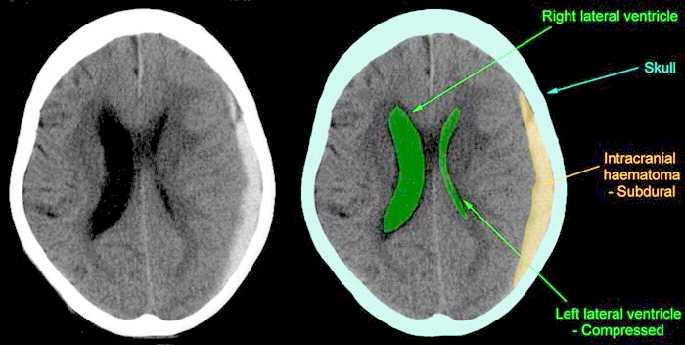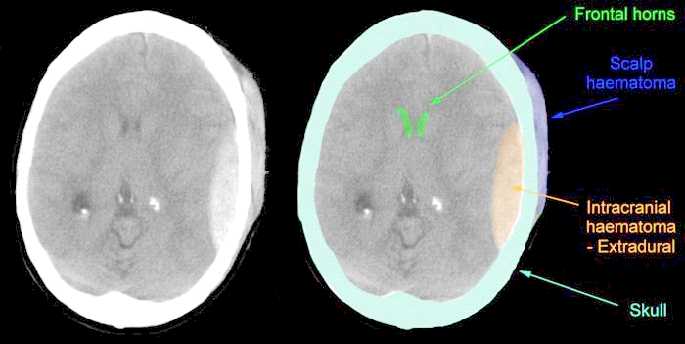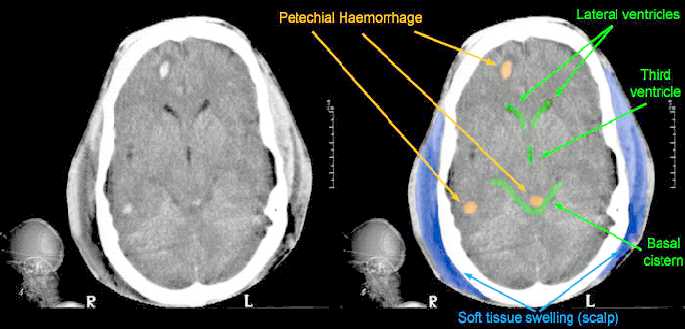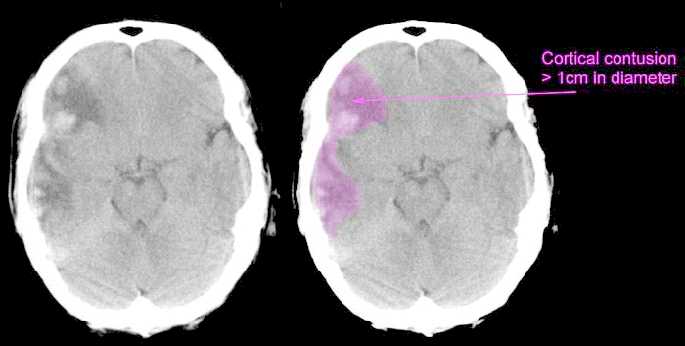Case 1 - Normal CT Scan:
Normal CT scan
It is worth spending
a few minutes familiarising yourself with the appearances of a normal
CT scan. It is much easier to detect abnormalities once you are accustomed
to normal appearances. The scan below is a slice through the human brain
and you should imagine that you are viewing it as if looking up from the
patient's feet. Therefore, the patient's left is to the right of the screen.
The shape of the ventricles is quite distinctive and they are shown outlined
in green and orange. The presence of the third ventricle in the midline
is one of the first things to look for. If the third ventricle is either
not visible, or shows signs of shift away from the midline, this suggests
that there is an abnormality. The basal cisterns is the fluid filled space
around the back of the midbrain outlined here in purple. Blood clots,
or swelling of the brain may cause this to become narrowed, or not visible
altogether. Note in this scan, that the frontal horns of the lateral ventricles
are symmetrical, with the septum between them in the midline.

